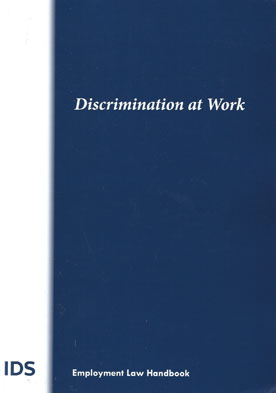We are now closed for the Christmas and New Year period, returning on Monday 5th January 2026. Orders placed during this time will be processed upon our return on 5th January.

The Equality Act 2010 (EqA) is a single anti-discrimination statute which covers all the 'protected characteristics' of age, disability, gender reassignment, marriage and civil partnership, pregnancy and maternity, race, religion or belief, sex, and sexual orientation.
It replaced almost all the previous anti-discrimination legislation in Great Britain and as a result, the same statutory provisions now apply {with some exceptions) regardless of which characteristic is being relied upon. The 2010 Act outlaws discrimination in a number of areas, including education and the provision of goods and services. However, this Handbook focuses on discrimination in employment, although given that many of the same concepts apply across all areas covered by the Act, we refer to other contexts where relevant.
Much of the EqA derives from, or is specifically designed to implement, the provisions of EU Equality Directives. For this reason, EU law has played a pivotal role in the development of discrimination law in this country and is referenced throughout this Handbook. As readers will be aware, the UK has recently given notice of its intention to withdraw from the EU.
The nature of the withdrawal agreement and the influence that EU law will continue to assert over UK domestic law following 'Brexit' are as yet unknown and for this reason the Handbook presents the law as it currently stands, without attempting to speculate as to what it might be in the future.
This IDS Employment Law Handbook aims to provide a clear and comprehensive account of the law relating to discrimination in the workplace. It explains the relevant legislative provisions of the EqA and examines the extensive body of case law that has built up. Both reported and unreported decisions are considered, not only of the higher courts but also of employment tribunals.
The Handbook begins by looking at the history of discrimination legislation in this country and the influence of European law in this area. It then sets out the different characteristics that are given protection under the Act, before examining the forms of discrimination prohibited by the Act - direct and indirect discrimination, discrimination arising from disability, victimisation, harassment, and a failure to make reasonable adjustments.
The Handbook explains the scope of the law - who is protected and who may be liable - and sets out the circumstances in which discrimination can arise - before, during and after employment. The exclusions and exceptions to the EqA are discussed in detail, as are the means by which an individual can enforce rights under the Act and the remedies available.
Finally, the Handbook considers the role of the Equality and Human Rights Commission in promoting and enforcing equality of opportunity and discusses the impact 'of the public sector equality duties